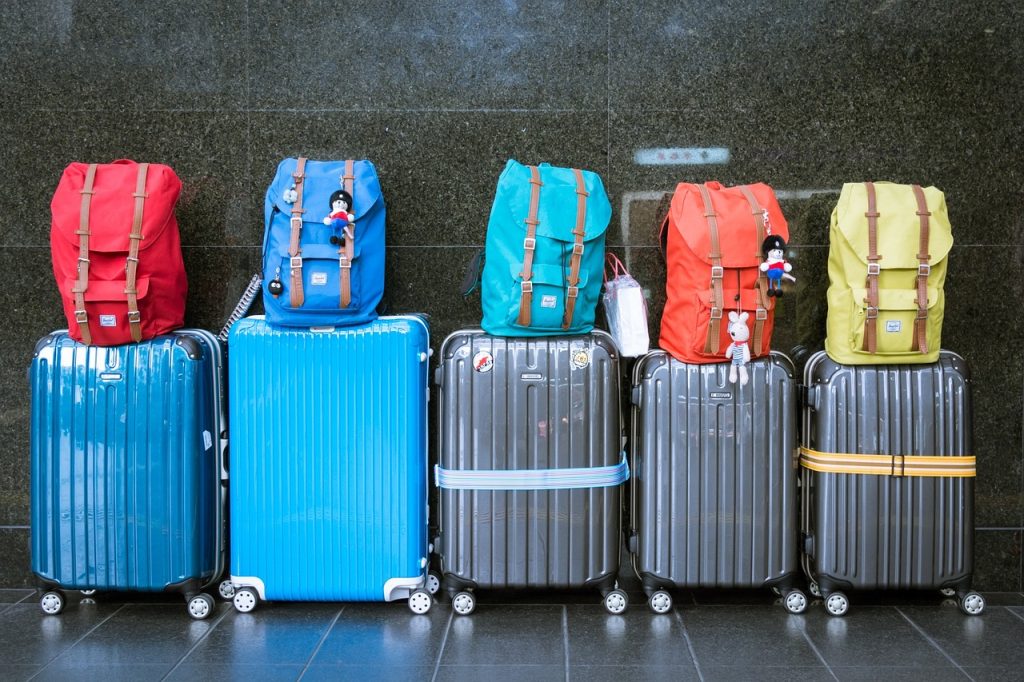Anúncios
When packing for a flight, understanding the carry-on luggage size is crucial to avoid last-minute fees and frustration at the airport.

This guide dives deep into the specifications set by airlines and the TSA, providing you with all the necessary details to travel hassle-free.
What Is Carry-On Luggage?
Definition and Purpose
Carry-on luggage refers to the bag or bags that passengers are allowed to bring into the airplane cabin. These items are intended to hold your essentials for the duration of the flight, ensuring that you have access to necessary items without waiting at the baggage claim. Carry-on bags typically include small suitcases, backpacks, briefcases, and personal items that can fit in the overhead bin or under the seat in front of you.
Benefits of Carry-On Luggage
Using carry-on luggage has several advantages:
- Time Savings: You avoid the wait at baggage claim and reduce the risk of lost or delayed luggage.
- Cost Efficiency: Many airlines charge extra fees for checked baggage, so carrying your own bag can lead to significant savings.
- Convenience: Keeping your valuables and essential items with you ensures that you have everything you need during your flight.
Standard Carry-On Luggage Dimensions
General Size Requirements
Most airlines adhere to a standard set of dimensions for carry-on luggage. The typical maximum size is 22 inches x 14 inches x 9 inches (56 cm x 36 cm x 23 cm), including handles and wheels. These dimensions are designed to ensure that your bag fits comfortably in the overhead compartments or under the seat, avoiding inconvenience during boarding.
Weight Limit Considerations
In addition to size, weight is an important factor. While many airlines do not impose a strict weight limit for carry-on bags, some may have restrictions, particularly on smaller regional flights. Generally, weight limits can range from 15 to 40 pounds (7 to 18 kg). Always check with your specific airline, as weight limits can vary based on the aircraft and flight route.
Airline-Specific Carry-On Guidelines
Uniform Guidelines Across Major Airlines
Many major airlines, such as American Airlines, Delta Air Lines, and Alaska Airlines, have similar carry-on size restrictions of 22″ x 14″ x 9″. However, there can be subtle differences:
- Alaska Airlines: Adheres closely to the standard dimensions.
- American Airlines: Follows the same guidelines, though exceptions may apply for certain international flights.
- Delta Air Lines: Generally follows standard dimensions, but be aware of specific policies for global routes.
Variations in Regional or Low-Cost Carriers
Low-cost carriers or regional airlines may have stricter or slightly different policies:
- Regional Airlines: Smaller planes might have reduced overhead bin space, resulting in lower size limits.
- Low-Cost Carriers: Some budget airlines may impose additional fees for carry-on luggage if it exceeds their specified limits.
Importance of Verifying Before Travel
Since policies can vary, it’s essential to review your airline’s specific carry-on guidelines before your trip. Check the airline’s official website or contact customer service to confirm the dimensions and weight limits, ensuring you avoid any surprises at the gate.
TSA Regulations on Carry-On Luggage
The 3-1-1 Liquids Rule
The Transportation Security Administration (TSA) sets clear guidelines on what you can bring in your carry-on bag:
- Liquids, Gels, and Aerosols: Must be in containers of 3.4 ounces (100 milliliters) or less.
- Quart-Sized Bag: All containers must fit into a single, clear, quart-sized zip-top bag. This rule is designed to minimize security risks while still allowing passengers to bring essential items like toiletries.
Prohibited Items
Certain items are not permitted in carry-on luggage for security reasons:
- Large Liquids: Items exceeding 3.4 ounces must be checked in.
- Sharp Objects: Knives, scissors, and other sharp tools should be packed in checked baggage.
- Sports Equipment: Items such as baseball bats or golf clubs often need to be checked due to safety concerns. Always review the TSA guidelines before packing to ensure that your carry-on complies with security regulations.
Special Considerations
While many items are prohibited, there are exceptions for:
- Medical Supplies: Necessary medications and medical devices are allowed, but must be declared at the security checkpoint.
- Baby Nourishments: Formula, milk, and juice for infants are exempt from the liquids rule, though you should declare these items for inspection. Understanding these exceptions can help you pack smartly without compromising on essential items.
Practical Tips for Carry-On Packing
Choosing the Right Bag
Selecting an appropriate carry-on bag is vital:
- Size and Weight: Ensure the bag meets airline dimensions and is light enough to avoid extra fees.
- Durability: Look for bags made from sturdy materials that can withstand the rigors of travel.
- Organization: Choose a bag with multiple compartments to keep your items organized and easily accessible during security checks.
Packing Strategically
Efficient packing can help you maximize space and meet airline requirements:
- Roll Your Clothes: Rolling clothes instead of folding them can save space and reduce wrinkles.
- Use Packing Cubes: These can help organize items by category, making it easier to locate your belongings quickly.
- Minimize Liquids: Keep your liquids in a separate, easily accessible quart-sized bag to streamline the TSA screening process.
- Plan Your Outfits: Pack versatile clothing items that can be mixed and matched, reducing the overall number of items needed.
Preparing for Security Checks
To ensure a smooth security process:
- Keep Your Liquids Bag Accessible: Place your 3-1-1 bag in an easily reachable spot so you can remove it quickly during screening.
- Organize Electronics: Pack larger electronic devices like laptops and tablets in a way that allows them to be removed easily for separate screening.
- Wear Minimal Accessories: Reduce the number of items in your pockets to expedite the security check.
The Impact of Carry-On Size on Your Travel Experience
Benefits of Right-Sized Carry-On Luggage
Properly sized carry-on luggage offers several benefits:
- Cost Savings: Adhering to size restrictions helps you avoid extra fees for oversized or overweight bags.
- Convenience: Carrying your own bag through the cabin means you can avoid waiting at the baggage claim.
- Efficiency: A well-packed, compliant bag streamlines the boarding process, reducing delays and stress.
Challenges of Oversized Carry-On Luggage
Oversized carry-on luggage can lead to several issues:
- Forced Check-In: If your bag exceeds the allowed dimensions, you may be required to check it in, incurring additional fees.
- Potential Damage: Checked bags are more susceptible to damage, and if your bag is bulky, it may not be handled as carefully.
- Travel Delays: Oversized bags can slow down the boarding process, affecting not only you but other passengers as well.
Why Size Matters
Adhering to carry-on size guidelines is essential for a smooth travel experience. Not only does it help you avoid unexpected fees and delays, but it also ensures that you have a more organized and efficient travel process. Investing in a high-quality, appropriately sized carry-on bag can make a significant difference in your overall journey, from security checks to boarding and beyond.
Conclusion
Understanding the specifications and guidelines for carry-on luggage is critical for any traveler. By knowing the standard dimensions and weight limits set by airlines and the TSA, you can avoid costly fees and ensure a hassle-free experience at the airport. Whether you’re a frequent flyer or an occasional traveler, following these guidelines and employing smart packing strategies will help you stay organized, save money, and enjoy your trip without unnecessary stress.
Remember to always double-check your airline’s policies before your flight, leverage digital tools to keep track of TSA regulations, and invest in quality luggage that meets the required dimensions. With careful planning and efficient packing, you can navigate the airport smoothly and make the most of your travel experience.
Ready to pack smarter and travel hassle-free? Start planning today and ensure that your carry-on is compliant, organized, and perfectly suited for your journey. Happy flying and safe travels!


